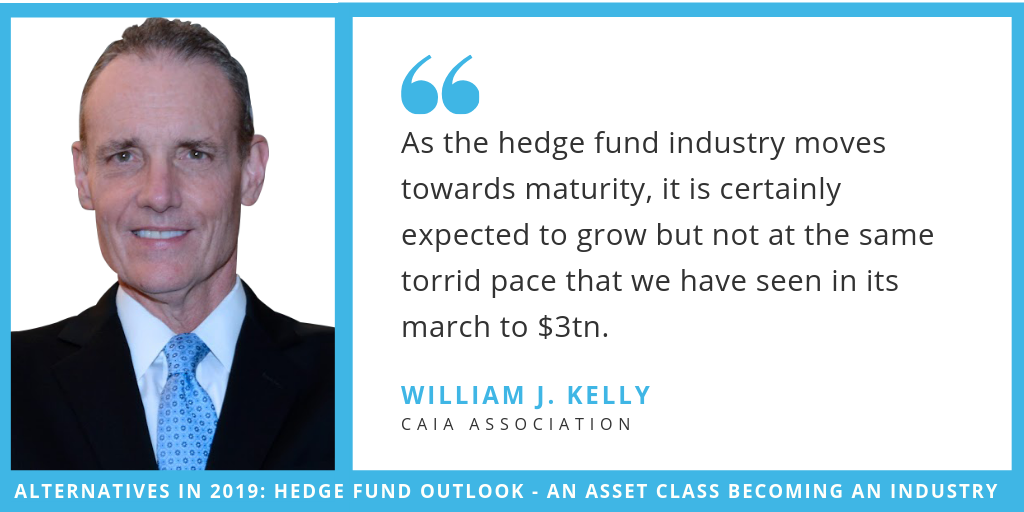William J. Kelly, CEO of CAIA Association, examines recent hedge fund performance statistics and postulates what lies in store for the asset class in the year ahead.
Q4 hedge fund letters, conference, scoops etc

“May you live in interesting times” is a quote that is attributed to everyone and no one at the same time. There are some with the view that its origins come from Ancient China. While that theory has largely been debunked, the reasons for the false premise are noteworthy. As the story goes, it is better to live in more peaceful (and uninteresting) times than in periods that are far more turbulent, and hence more interesting, and so it goes in the world of hedge funds.
2018 started out with a bang and the strong hedge fund performance of 2017 carried into the new year with an equally impressive showing. Then came February which quickly brought with it the prospect of rising rates and reminded us that markets can indeed still be volatile. October was even less kind as most global equity markets shed trillions in terms of market cap and hedge funds, in absolute terms, went negative too.
But what are investors expecting in these so-called “interesting” times in our capital markets? There are now over 15,000 hedged strategies available to the global investor. They cut across different geographic regions with very disparate investment processes, and we need to recognize that hedge funds are no longer an asset class, but an industry wrestling with maturity and purpose.
The breeding ground for alpha is usually best found in the less efficient corners of the market. There you will find asymmetric relationships that can be discovered and exploited by the savvy investor that is early, patient and less concerned about liquidity. These parts of the market will always exist but are increasingly harder to find as more and more alpha hunters come onto the playing field. Volatility and other longer-term periods of market dislocation will also bring unique opportunities to ply these hedged investment skills. Hedged strategies can also be an equally important part of an asset allocation where the investor is looking for a solution that will simply seek to reduce volatility, and that trade remains alive and well too.
As the hedge fund industry moves towards maturity, it is certainly expected to grow but not at the same torrid pace that we have seen in its march to $3tn. In fact, the recent Future of Alternatives report by Preqin forecasts AUM to be 30% higher by 2023, which will put the industry close to $5tn. This is an excellent headline, but the investor and the industry need to take stock of the obvious byproducts of this growth.
More funds and more general partners will certainly bring increased market efficiency, and the wider deployment of either pure quantitative- or “quantamental-” driven investment processes will make the alpha opportunities even more discrete and fleeting. Performance dispersion will continue to widen across quartiles, and thorough operational and investment due diligence will be ever more important.
The exiting of the very accommodating central bankers has also begun, but not in the same unison that we saw when they first came into the capital markets 10 years ago. Price discovery and diversification will matter much more when this risk-on trade, fuelled by these non-arm’s length participants, unwinds. It is in those very interesting times where the inevitable value of a hedged portfolio will shine.
For expert commentary, key trends, historical statistics and survey results, take a look at the newly released 2019 Preqin Global Hedge Fund Report – the most complete and in-depth review of the industry available.
Article by Preqin

